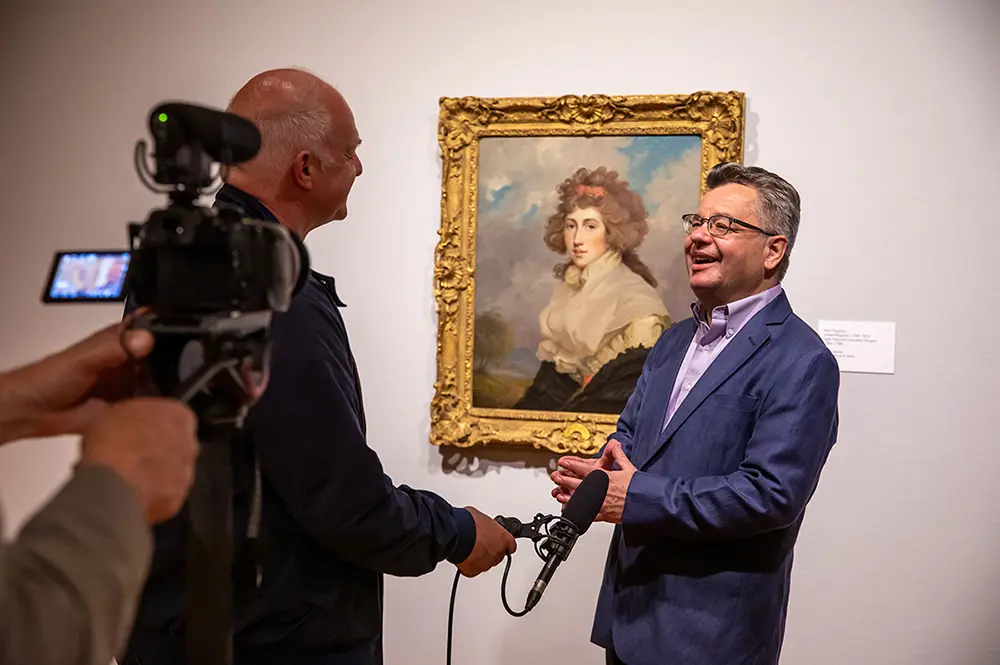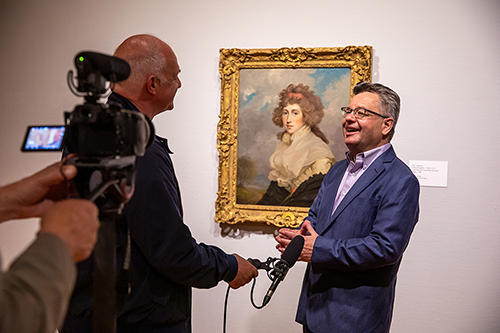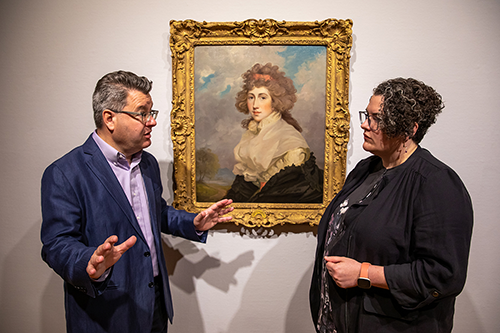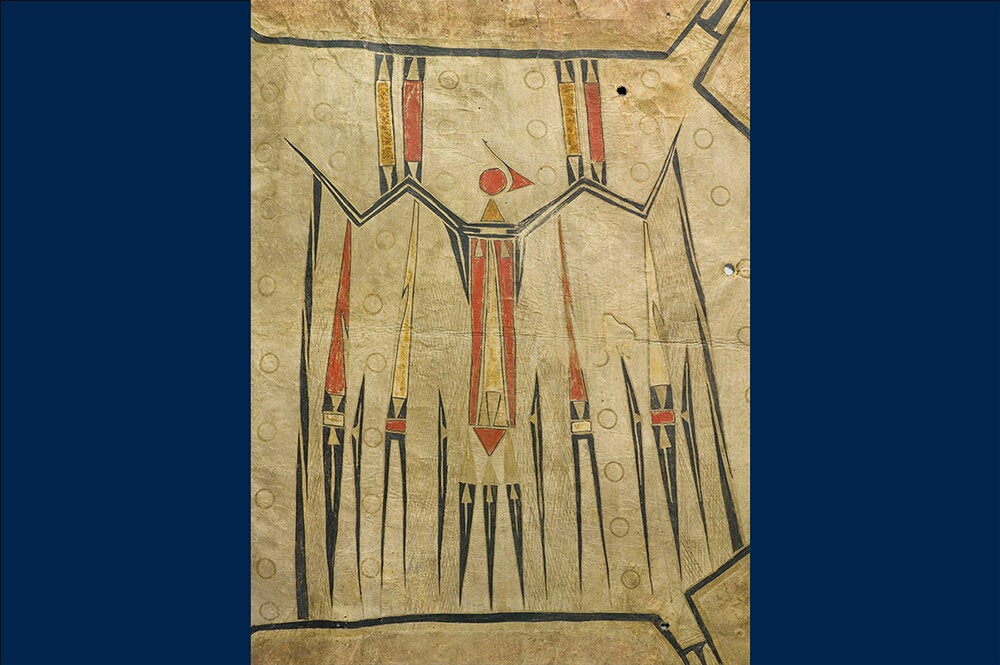

A series of eight videos available online highlights the research of University of Illinois Urbana-Champaign history professor Craig Koslofsky on ways of marking and understanding skin in the early modern world.
Koslofsky – who studies early modern European and global history – is writing a book, “The Deep Surface: Skin in the Early Modern World, 1450-1750,” under contract with Cambridge University Press. He received a fellowship from the Gerda Henkel Foundation for the project; the German foundation, which provides funds for historical research in the humanities, asked him to participate in creating videos on the topic for its website.
The eight videos, which are five to six minutes each, provide a preview of Koslofsky’s book, and they also highlight the Illinois campus and the perspectives of other Illinois scholars. They were filmed at numerous locations on the U of I campus, at the Newberry Library in Chicago, and at the city archives of Kiel, Germany.
“One of my goals was to have this be a real celebration of the U of I,” Koslofsky said.
The videos are available on the foundation’s website in English and German. The first video was posted Feb. 22, and the other episodes have been posted weekly for the following seven weeks.
Koslofsky said skin color has not always been seen in the same way or played the same role in society. His work is not focused solely on skin color, but also on tattooing, scarification, cosmetics and the microanatomy of skin. The research examines how society’s understanding of skin has evolved and how the intense focus on skin color shapes our culture, he said.

“If I can show in more detail how the concept was historically constructed, that is a prerequisite for the deconstruction of it. Showing the history of seeing skin color is an opportunity for us to get past it,” Koslofsky said.
In a video filmed at Krannert Art Museum, Koslofsky and KAM curator of European and American art Maureen Warren discussed the implications of an 18th century portrait of a young woman from a powerful aristocratic family. “Lady Frances (Lascelles) Douglas,” by John Hoppner, emphasizes the blush of the woman’s cheeks, with the color picked up in her lips and clothing. The portrait is painted in pastel tones against an agrarian landscape, and the woman’s clothing is the height of 18th century fashion, Warren said.
She said the painting is an engagement portrait presenting the subject as a beautiful, fertile woman, with her blush indicating youth.
“That is what she brings to the transaction. She is a youthful, attractive woman to bear children. It’s a very gendered portrayal,” she said.
Warren and Koslofsky contrast it with a 1555 portrait of a French princess, who is painted with an alabaster complexion without any hint of color in her cheeks. Whiteness was not a crucial distinction in the middle of the 16th century, but it was very important by the 18th century when the British were heavily involved in the slave trade and wanted to distinguish themselves from Africans, Koslofsky said.
“This is the visual embodiment of the blush as a sign of whiteness and representative of a family for whom the slave trade was such a source of wealth and profit. That is the ugly side of this beautiful portrait,” he said of Hoppner’s painting.
“When I look at that portrait, I see a beautiful woman without a care in the world who is the inheritor of four generations of slave trade. Maureen Warren sees a woman who is propped up to carry on a family line and have babies,” Koslofsky said. “You get deeply informed by other perspectives.”
Later, the blush had a more sinister meaning. White supremacy organizations used it as a test to determine if a person was white enough to join their groups, Koslofsky said.
In the other videos, Koslofsky discussed how those in West Africa and the Americas traditionally marked skin through tattooing or scarification, and how French explorers in the New World adopted Native American tattooing practices. He talked with history professor Bob Morrissey, who studies the history of early America, about how encounters between European explorers and Indigenous people changed the Europeans’ perceptions of skin.
Koslofsky is seen in one of the videos doing research in the city archives in Kiel, where in 1675 an unidentified West African woman was found dead and was dissected in an effort to understand the anatomy of Black skin.
Looking at skin color and its racialization is another form of marking skin, and “like all forms of dermal marking, it confines and limits people,” Koslofsky said.


